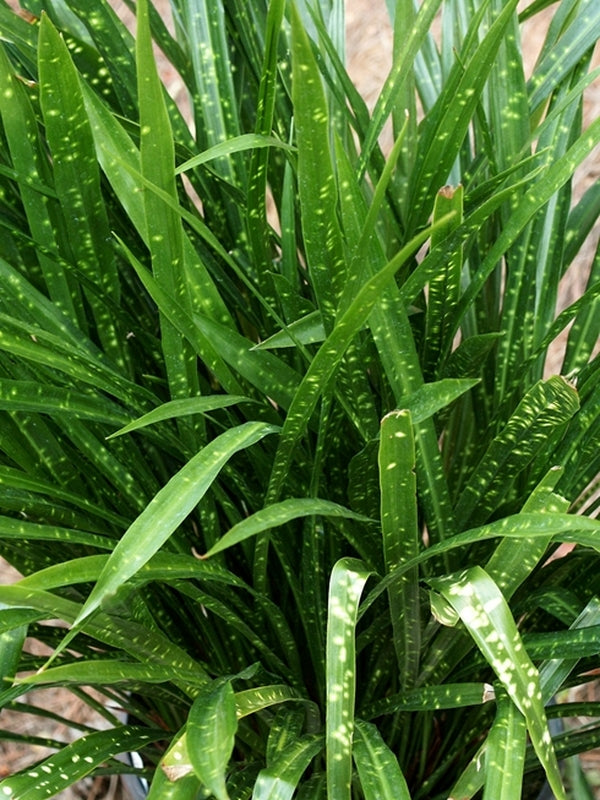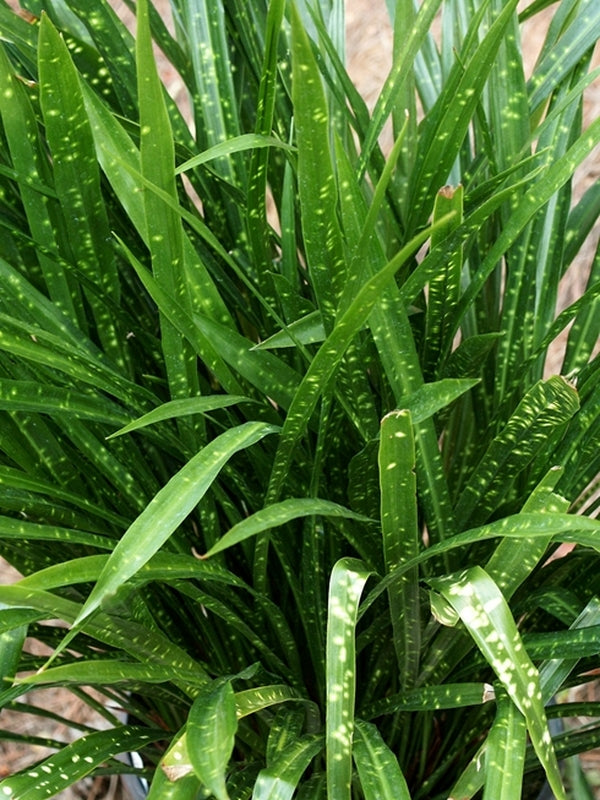Aspidistra minutiflora 'Leopard'
Leopard-spotted Small-flowered Cast Iron Plant
Item #: 2117
Zones: 8a to 10b
Dormancy: Evergreen
Height: 30" tall
Origin: China
Pot Size: 3.5" pot (24 fl. oz/0.7 L)
Aspidistra minutiflora 'Leopard' is a 1999 Plant Delights/JLBG introduction of a truly unique cast iron plant. For us, it forms a dense, symmetrical evergreen clump to 32" tall, but with narrow, ribbon-like leaves only 0.5" wide. Each green leaf is heavily speckled with large golden spots. Aspidistra 'Leopard' makes a stunning specimen for the woodland garden in the Deep South and a great house plant further north. Our plants were shared by plantsman Jim Waddick from one of his expeditions to China.
Maintenance:
Aspidistra are very low maintenance perennials. Each leaf can last up to 3 years, but after the second year, it will begin to show signs of aging and leaf degradation. For that reason, we recommend removing all old foliage regularly to retain the attractiveness of the clump. It's always disappointing to see large patches of cast iron plants in public spaces where it hasn't been properly maintained.
Growing Conditions:
Cast iron plants grow well in both moist and dry soils as long as the drainage is good. Aspidistra must be grown in shade, since their foliage will scorch if they are subjected to sun. In the jungles where they grow, they are often seen in very deep shade.
In containers, they make superb house plants. The common name cast iron plant speaks to their durability in less than ideal conditions. Regular moisture, including increased humidity when they are grown as house plants, keeps them from getting stressed and becoming susceptible to spider mites.
Garden Value:
The bold texture and upright form of cast iron plants is invaluable in the garden, since there few other plants with this form and texture. Many have amazing flowers, produced at the base of the foliage, often in the winter months. While these flowers are rarely noticed in the garden, they can be quite attractive in the home.

-
Other Attributes
Genus: Aspidistra
Flower Color: Purple/Lavender
Leaf Color: Green , Variegated , Yellow/Gold
Container Role: Thrillers
Garden Themes: Living Wall
Other: Deer Resistant Plants , Drought Tolerant Plants , Dry Shade Plants , Groundcovers , Medicinal Plants , Plant Delights Introductions , Plants from China , Rabbit Resistant Plants , Salt Tolerant Seaside Plants , Tropical Looking Plants , Xeriscaping Plants , Colored Foliage , Patterned Foliage



